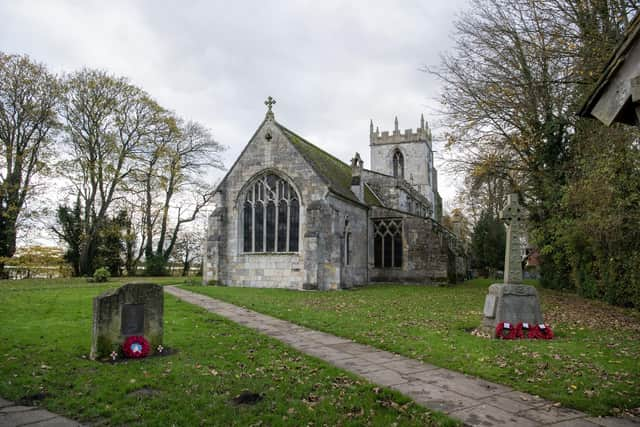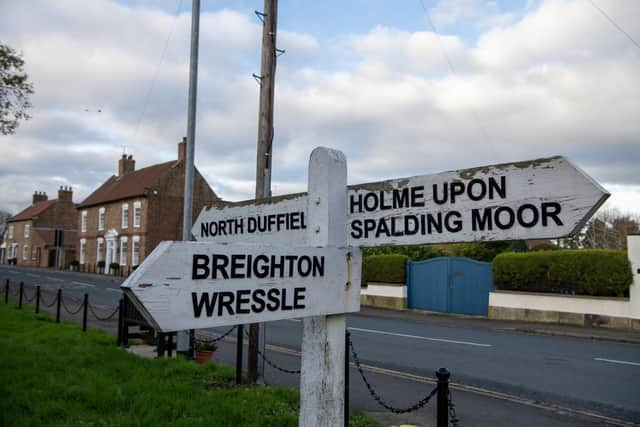Village of the Week: Bubwith is an ancient Yorkshire river settlement with Viking origins
Described as one of Yorkshire’s “ancient” villages, Bubwith, in the East Riding, came to be when living by the field and water was the only thing to do.
The village's name means Bubba's wood and Bubba is a Scandinavian male name. The village is also listed as "Bobewyth" in 11th-century accounts of Selby Abbey.
Advertisement
Hide AdAdvertisement
Hide AdWhile Roman coins have been found in nearby Spaldington, there is not really much other evidence to point towards Roman settlement.


However, there is strong evidence to suggest Bubwith was occupied before the Domesday Book (where the village name appears as Bubuid).
As Bubwith isn’t that far from the Humber Estuary, it, like the hamlets that would have been around it at the time, were vulnerable to invaders from the sea.
Local history publication, Bubwith.Net, suggests that it is likely the Bubwith area was settled by invaders prior to the Vikings, Danes and other Northmen, especially as the banks of the Derwent at Bubwith were fully navigable, had natural landing points and well stocked with fish.
Advertisement
Hide AdAdvertisement
Hide AdThe history that is tangible with the Bubwith that we can see today though has to come forward a few hundred years.


“The ground in this neighbourhood is remarkably fertilized by the overflowings of the Derwent, and yields abundance, not to be surpassed except on the banks of the Nile.”
These words were written by Edward Baines in 1823.
While there can’t be that many similarities between the East Riding and The Nile I am sure, the low land and river do make for good growing conditions and the area produces wheat, oats, barley, and potatoes.
Unless it floods. It has done over the years and it did again this month.


Advertisement
Hide AdAdvertisement
Hide AdBubwith Bridge was closed on December 12 after the River Derwent flooded. The bridge on the main road between York and Selby, built in 1798, only re-opened in October following months of repairs after it had been hit by a vehicle in September 2022 which revealed structural faults with the bridge.
Customers popping to The White Swan for a pint face a long detour via Howden after the pub was cut off by closures bridges at both Bubwith and Wressle.
Bubwith Bridge is used by the government as a measuring station for river levels and says that the normal range is between 1.98m to 5.30metres.
Yet on December 12 it was 5.87m high. They are the highest river levels recorded since 2000.


Advertisement
Hide AdAdvertisement
Hide AdWhen the river overflows the flood can take out whole fields of crops.
Evidence taken from wills shows that livestock, including pigs, sheep, horses and cattle were farmed throughout the medieval and late modern period and there are many references to grazing on the Ings by both sheep and cattle depending upon the time of year.
Bubwith.Net which has comprehensive records and is a mine of information for anyone doing local history research also tells of a practice that would never pass a HR test these days.
It reads: “Workers for the fields and house-servants were generally recruited from the Selby Hiring Fair, held on Martinmas Monday. The farmers and agricultural labourers stood near to the Abbey, whilst the lads and lasses stood at the other end of the market near the banks. After the hiring was concluded the workers would celebrate in a fair held in Wide Street.”
Advertisement
Hide AdAdvertisement
Hide AdAlso taking out Bubwith faster than a free flowing River Derwent was the plague.
From 1346 to 1353 the plague, or the Black Death, spread through Europe at a rapid rate causing the deaths of 25 - 50 million people.


Affected settlements were given a relief on the subsidy (taxes) they had to pay.
Records show that Bubwith was given a relief of 10 shillings on the £2 10s it had to pay with the amount of relief being comparable to the number of local deaths.
Advertisement
Hide AdAdvertisement
Hide AdOf the townships and areas around Bubwith, this was the highest level of relief awarded, suggesting the village was quite badly affected.
Other fascinating snippets from a timeline of Bubwith’s history are that on June 12, 1671, “William Agar of Howden, stole a colt from the town fields of Hunmanby some 40 miles away and headed home with it. Seven days later he disposed of the colt at the nearby fair at South Cave to John Dunn, a draper from Howden, who immediately sold it to Richard Simpson, a labourer from the same town. On 25th July, Simpson took the animal 15 miles to Pocklington fair where he exchanged it for a filly belonging to George Skipwith, a Spaldington brewer. There, at Spaldington, Richard Blackburn of Hunmanby found his stolen horse.”
The Caledonian Mercury reported details of a murderer in the village following an incident in April 1766.
“John Skipwith of Breighton, in the parish of Bubwith, in the East-Riding of that county, charged with the murder of John Eckels, of the same place. John Eckels had been at Howden market on Saturday, where he had received about 20l. in cash; that Skipwith and he went home together, and when they got near Breighton, Skipwith knocked him down with a hatchet, and robbed him. John Eckels languished till the Tuesday following, during which time he was able to give some account of his misfortune.”
Advertisement
Hide AdAdvertisement
Hide AdThankfully, life in Bubwith today is not quite as dramatic perhaps.
Orange roofed cottages with narrow red bricks would have been part of farms over the years and it is lovely to see the remain.
Bubwith has a historic parish church, pub, village shop, deli, butcher, hairdresser and takeaway as well as a school and sports fields.
And while agriculture is still present, there is more to community life these days.
